Scientists Release Lobsters To Repopulate Former Habitat
Advertisements:
Isabel Schmalenbach, an environmental scientist with the Helgoland Biological Institute (Biologische Anstalt Helgoland), part of the Alfred Wegener Institute for Polar and Marine Research, holds a one-year old baby European lobster (Homarus gammarus) raised at the institute on August 3, 2013 on Helgoland Island, Germany. Later in the day Schmalenbach and her colleagues released a total of 415 one-year old lobsters into the North Sea as part of an effort to repopulate the lobster population around Helgoland (also called Heligoland). In the 19th century local fishermen caught up to 80,000 lobsters a year in the surrounding waters, combined with the heavy allied bombing of the island during and after World War II, as well as other environmental factors, decimated the lobster population. (Photo by Sean Gallup/Getty Images)
Isabel Schmalenbach, an environmental scientist with the Helgoland Biological Institute (Biologische Anstalt Helgoland), part of the Alfred Wegener Institute for Polar and Marine Research, holds an adult female European lobster (Homarus gammarus) whose eggs she used to breed baby lobsters at the institute on August 3, 2013 on Helgoland Island, Germany. (Photo by Sean Gallup/Getty Images)
Isabel Schmalenbach, an environmental scientist with the Helgoland Biological Institute (Biologische Anstalt Helgoland), part of the Alfred Wegener Institute for Polar and Marine Research, displays the green tag on the underside of a baby European lobster (Homarus gammarus) raised at the institue on August 3, 2013 on Helgoland Island, Germany. Later in the day Schmalenbach and her collagues released a total of 415 one-year old lobsters into the North Sea as part of an effort to repopulate the lobster population around Helgoland (also called Heligoland). (Photo by Sean Gallup/Getty Images)
A European lobster (Homarus gammarus) larva, approximtely 5mm long, swims in a tank at the Helgoland Biological Institute (Biologische Anstalt Helgoland), part of the Alfred Wegener Institute for Polar and Marine Research, on August 3, 2013 at Helgoland Island, Germany. (Photo by Sean Gallup/Getty Images)
An adult female European lobster (Homarus gammarus) lies on the floor next to a one-year old lobster of the same species at the Helgoland Biological Institute (Biologische Anstalt Helgoland), part of the Alfred Wegener Institute for Polar and Marine Research, on August 3, 2013 at Helgoland Island, Germany. (Photo by Sean Gallup/Getty Images)
A live adult female European lobster (Homarus gammarus) lies on the floor for a photo at the Helgoland Biological Institute (Biologische Anstalt Helgoland), part of the Alfred Wegener Institute for Polar and Marine Research, on August 3, 2013 on Helgoland Island, Germany. (Photo by Sean Gallup/Getty Images)
Baby European lobsters (Homarus gammarus) from the Helgoland Biological Institute (Biologische Anstalt Helgoland), part of the Alfred Wegener Institute for Polar and Marine Research, lie in cups before scientists released them into the North Sea on August 3, 2013 at Helgoland Island, Germany. (Photo by Sean Gallup/Getty Images)
Anna-Sophie Brands (L) and Susanne Wiechmann, volunteers at the Helgoland Biological Institute (Biologische Anstalt Helgoland), part of the Alfred Wegener Institute for Polar and Marine Research, pull baby European lobsters (Homarus gammarus) from their cubbies at the institute to load them onto trays and later release them into the North Sea on August 3, 2013 at Helgoland Island, Germany. (Photo by Sean Gallup/Getty Images)
Volunteers with the Helgoland Biological Institute (Biologische Anstalt Helgoland), part of the Alfred Wegener Institute for Polar and Marine Research, load trays of baby European lobsters (Homarus gammarus) onto a boat to release them into the North Sea on August 3, 2013 at Helgoland Island, Germany. (Photo by Sean Gallup/Getty Images)
A volunteer with the Helgoland Biological Institute (Biologische Anstalt Helgoland), part of the Alfred Wegener Institute for Polar and Marine Research, tosses an adult female European lobster (Homarus gammarus) into the North Sea before also releasing baby lobsters on August 3, 2013 off the coast of Helgoland Island, Germany. (Photo by Sean Gallup/Getty Images)
Isabel Schmalenbach, an environmental scientist with the Helgoland Biological Institute (Biologische Anstalt Helgoland), part of the Alfred Wegener Institute for Polar and Marine Research, releases baby European lobsters (Homarus gammarus) into the North Sea as sponsors of the lobsters look on from a boat on August 3, 2013 off the coast of Helgoland Island, Germany. Schmalenbach and her collagues released a total of 415 one-year old lobsters as part of an effort to repopulate the lobster population around Helgoland (also called Heligoland). (Photo by Sean Gallup/Getty Images)
Isabel Schmalenbach, an environmental scientist with the Helgoland Biological Institute (Biologische Anstalt Helgoland), part of the Alfred Wegener Institute for Polar and Marine Research, tosses an adult female European lobster (Homarus gammarus) into the North Sea before also releasing baby lobsters as sponsors of the lobsters look on from boats on August 3, 2013 off the coast of Helgoland Island, Germany. (Photo by Sean Gallup/Getty Images)

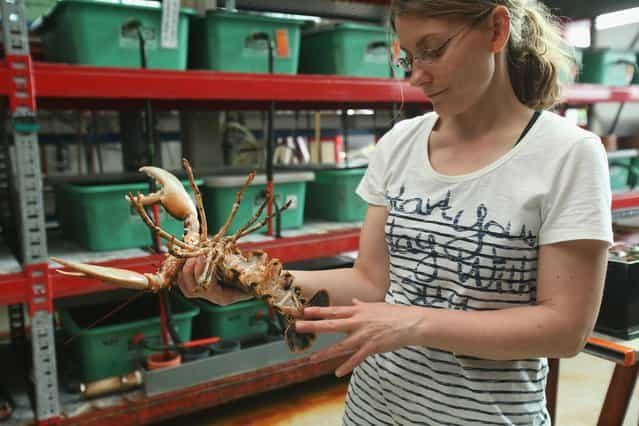
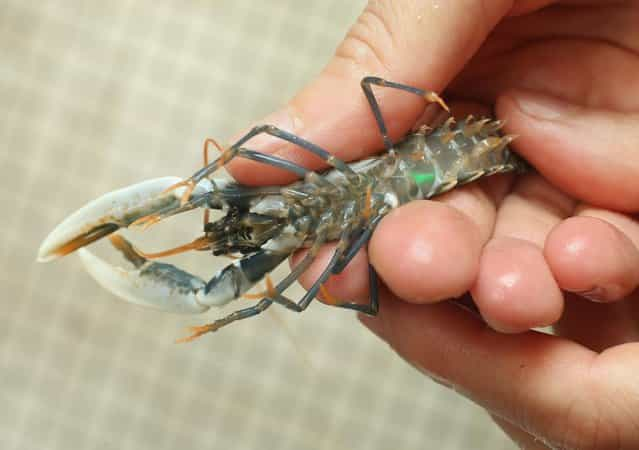

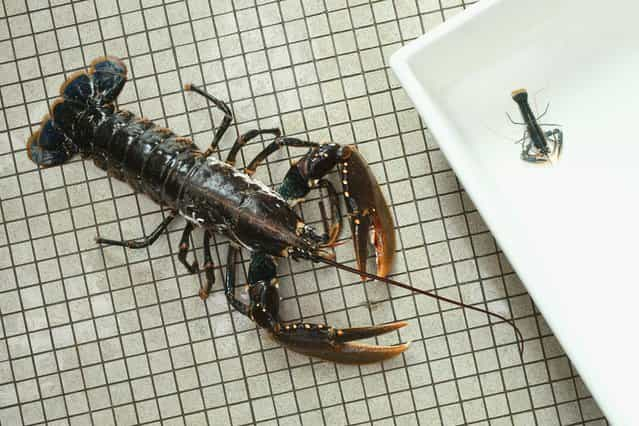
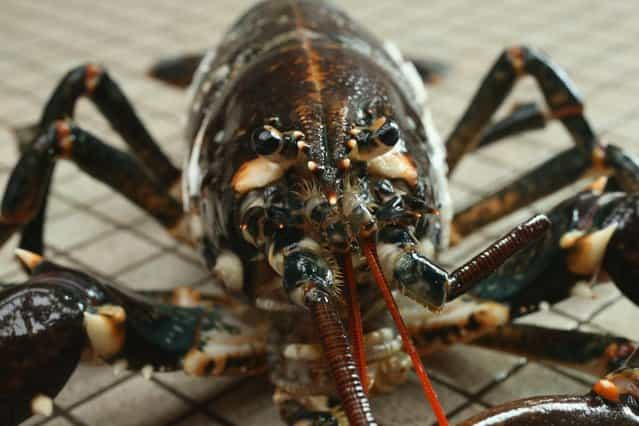
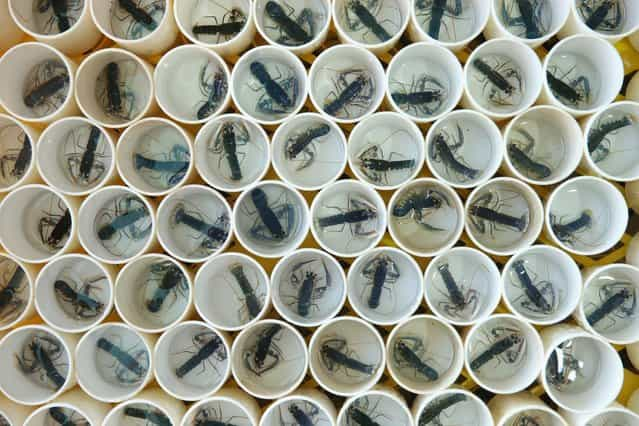
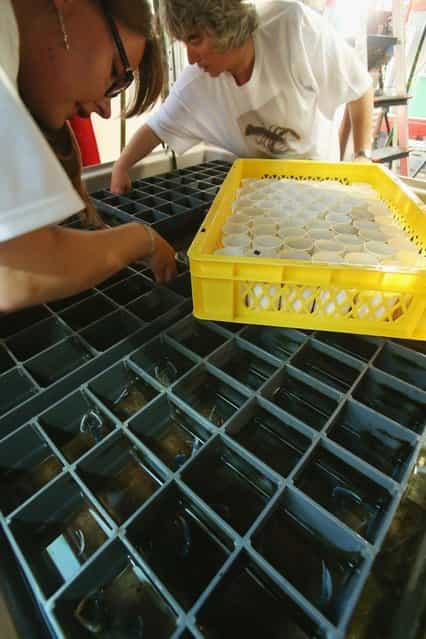
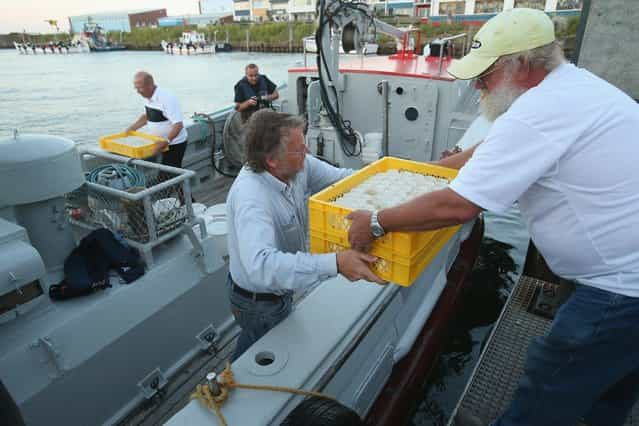
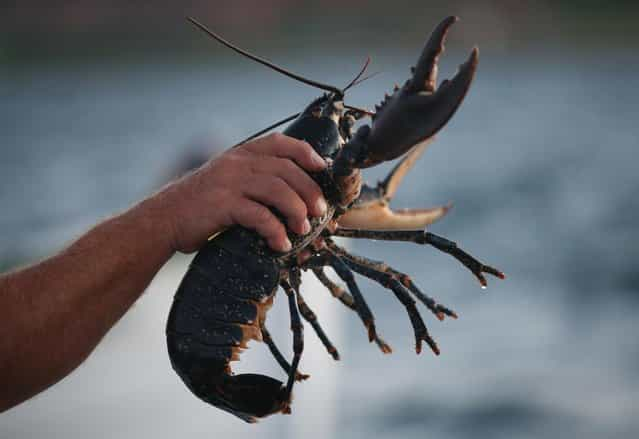
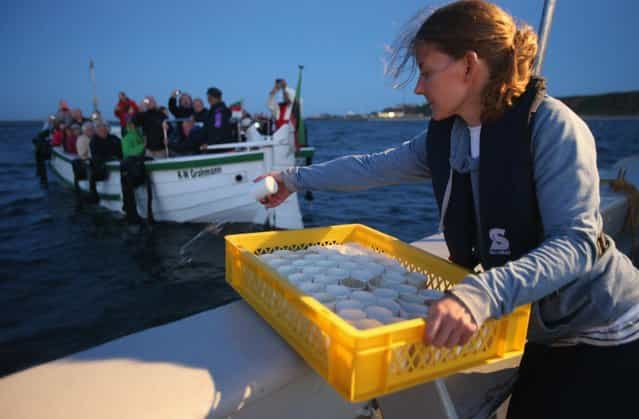
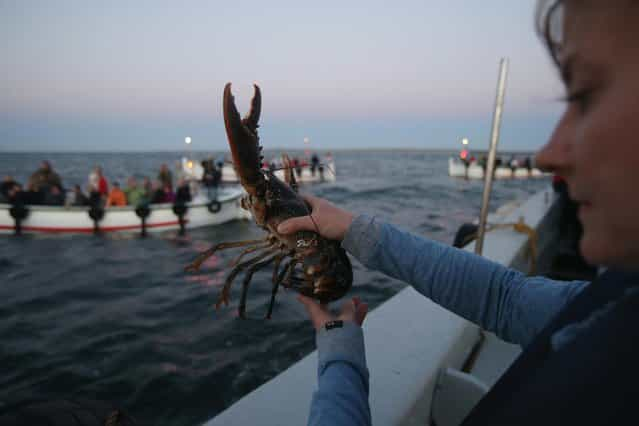

![Beyonce Attends the [Schiaparelli And Prada Impossible Conversations] Beyonce Attends the [Schiaparelli And Prada Impossible Conversations]](http://img.gagdaily.com/uploads/posts/fact/2013/short/000076d0_medium.jpg)

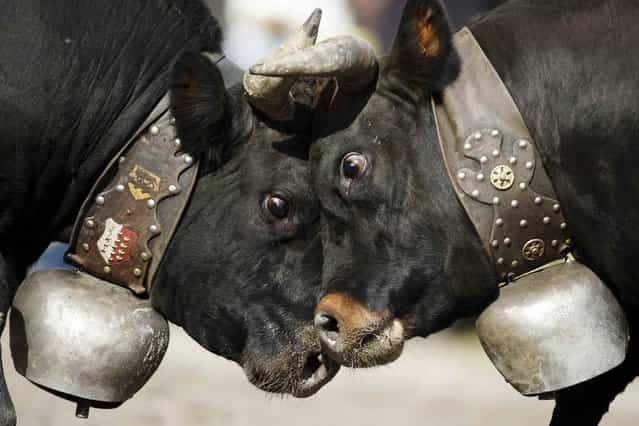
![The Science Museum Unveils Their Latest Exhibition [Robotville] Displaying The Most Cutting Edge In European Design The Science Museum Unveils Their Latest Exhibition [Robotville] Displaying The Most Cutting Edge In European Design](http://img.gagdaily.com/uploads/posts/app/2013/short/000050b3_medium.jpg)
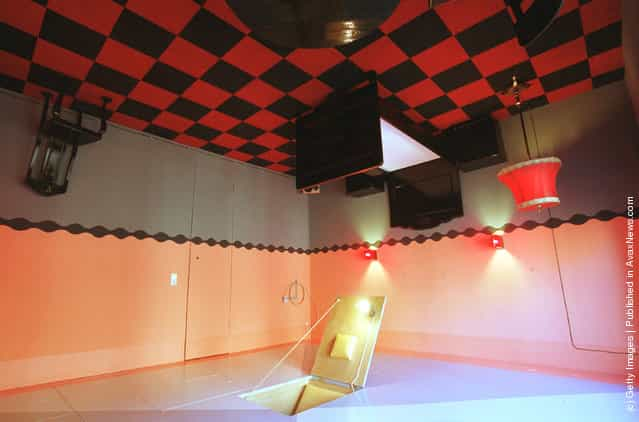

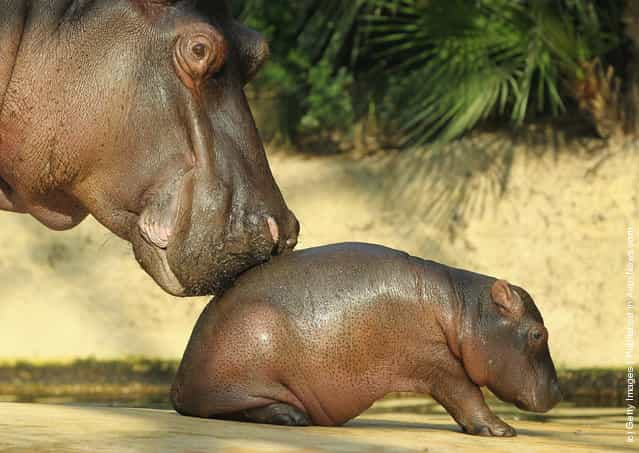

![Rare [Hybrid] Total Solar Eclipse Rare [Hybrid] Total Solar Eclipse](http://img.gagdaily.com/uploads/posts/fact/2013/short/00010c55_medium.jpg)






